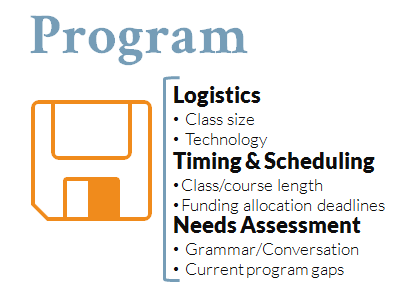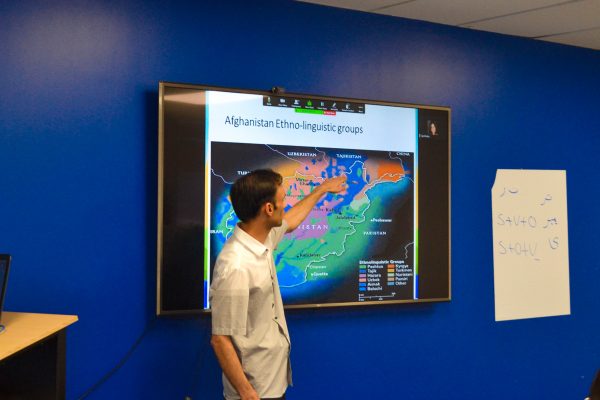One essential part of the pre-development stage of any curriculum is analyzing your current program. As discussed in “How To Develop A Curriculum: Part 1, People,” you need to synchronize many moving parts into a singular effort and direction. Now it’s time to move on to another of the Four P’s: Program. Three major aspects of your program to consider are logistics, timing, and scheduling, and needs assessment.


LOGISTICS
Consider the logistics of your classroom and how the course will be delivered. Room size and space constraints may influence class size as well as the range of possible activities. What does your classroom look like? Is there space for physical, interactive activities? You should also consider the following:
- Who will teach the course? Will it be co-taught?
- What technology will be available in the classroom? Could the teachers use audio clips of conversations? Will you have any advanced learning tools, like a SMART Board?
- Will students have online access to do homework?
While a technology wish list is great to make, you should probably build your curriculum around the list of technology that you have.
TIMING & SCHEDULING
For timing and scheduling, there are many foundational questions to ask:
- What amount of instruction time do you want, and how many hours per day?
- How many calendar weeks and months will the course last?
- How much flexibility will be in your development schedule?
You might decide to pilot—or test and review—the material before implementing it. This can help refine your product, but you need to build it into your timeline. Also consider the flexibility of your funding allocation deadlines, since this will impact these scheduling factors. Consider if you have to use your funds by a specific date, if you can break up the payments, etc.
NEEDS ASSESSMENT
In order to understand what you want to get, you need to figure out what you need. During a needs analysis, you will determine and address the gaps in your current program. You can create a needs assessment in different ways (i.e., student interviews, statistical analysis, test-centered data), but it needs to be detailed. Whatever your process, you should be able to answer the following questions:
- What are your students’ key needs?
- Which needs are a priority?
- What needs are not being met by the current curriculum?
- Do these needs fit within your mission as an organization?
Are you able to meet these needs effectively with the skills and experience your organization currently has?
Your needs assessment will steer the development phase and bring focus to your planning. If your students need to travel to different regions in an area, for example, you might include a recurring section on transportation vocabulary, conversational topics, or regional differences. If your students need linguistics, you might emphasize grammar; whereas, if your students need conversational focus, you might de-emphasize grammar.




